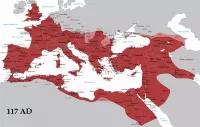A schism is a division or separation between people, typically within an organization, movement, or religious group. It often refers to a split within a religious body, like the Great East-West Schism, but can also describe divisions in non-religious contexts, such as between individuals in a friendship or romantic relationship.
1923: Fall of the Ottoman Empire
Following the fall of the Ottoman Empire in 1923, there hasn't been a widely recognized Caliph within Sunni Islam. This event marked a significant turning point in the history of the Caliphate, which had transitioned from a democratically elected position to a hereditary dynastic rule after the first four Rightly Guided Caliphs.
1983: Code of Canon Law
The 1983 Code of Canon Law codified that within the Roman Catholic Church, an act of schism, similar to apostasy or heresy, automatically results in excommunication for the individual. This penalty aims to be corrective, seeking to ultimately restore unity.
2004: Schism between Patriarch Bartholomew I of Constantinople and Archbishop Christodoulos of Athens
In 2004, a schism, a break of communion, occurred between Patriarch Bartholomew I of Constantinople and Archbishop Christodoulos of Athens. This event highlighted that such breaks are not always about doctrinal differences, further illustrating the distinction between heresy (rejecting essential doctrines) and schism (rejecting communion with Church authorities).
2018: Moscow-Constantinople Schism
In 2018, a significant schism occurred within Eastern Orthodoxy. This division arose between the Ecumenical Patriarchate of Constantinople, the primatial See of Eastern Orthodoxy, and the Russian Orthodox Church. The controversy stemmed from Constantinople's decision to grant autocephaly, or independence, to the Orthodox Church of Ukraine.
Mentioned in this timeline
Ukraine is a large country in Eastern Europe second in...

The Catholic Church the largest Christian church globally with over...

An empire is a political structure consisting of a dominant...

Moscow is the capital and largest city of Russia located...
Trending

2 months ago Upstart's Q3 Earnings: Mixed Results, Soft Q4 Guidance, and Stock Slides After Announcement.
2 months ago Great Salt Lake Dust Cost Revealed; Ogden Canyon Restaurant Set to Reopen.

1 month ago Jake Paul to Fight Anthony Joshua on December 19: A Sensational Boxing Match

1 month ago Kelly Ripa and Mark Consuelos Debate Thanksgiving Dinner Time; New Episode Airs
7 months ago Court Rules Trump Can Restrict Associated Press Access: Implications for Journalism
28 days ago Dominion Energy: AI Upside, Offshore Wind Progress, and a New 1-Year High.
Popular

Stranger Things created by the Duffer Brothers is a popular...

XXXTentacion born Jahseh Dwayne Ricardo Onfroy was a controversial yet...
The Kennedy Center Honors are annual awards recognizing individuals and...
Turning Point USA TPUSA is an American nonprofit organization founded...

Bernie Sanders is a prominent American politician currently serving as...

Candace Owens is an American conservative political commentator and author...